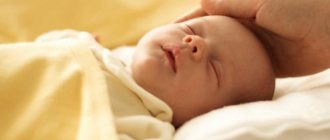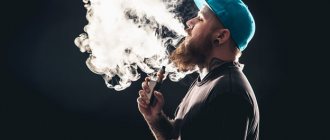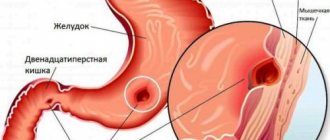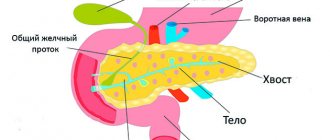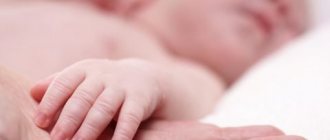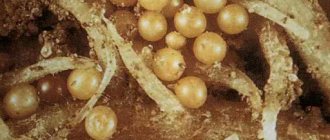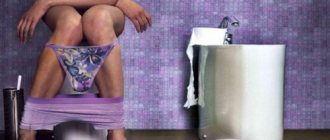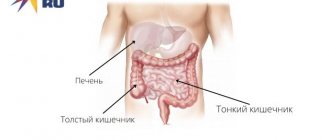What is bilirubin? It is a breakdown product of hemoglobin present in the blood serum and bile of every person. The level of bilirubin in the blood checks the condition of the liver, biliary tract and hematopoietic organs, which is why a blood test for bilirubin is extremely important.
Here are some symptoms, the occurrence of which will serve as a signal for a visit to the doctor: yellowing of the skin and mucous membranes of the body, yellowness of the sclera of the eyes, constant pain or heaviness in the right hypochondrium. If you or your loved ones have similar features of the disease, it is worth visiting a doctor.
More about bilirubin
Jaundice due to elevated bilirubin levels
Bilirubin participates in blood plasma in the form of two types, fractions: direct, bound (conjugated) and indirect, free or unbound (unconjugated).
- Direct bilirubin (conjugated) – processed by the liver, soluble in water, non-toxic. It is eliminated from the body. It is also called bound.
- Indirect, free (unconjugated), unbound bilirubin - when it penetrates cells, it leads to disruption of their functions. Free bilirubin is insoluble in water, but is well absorbed by fats and poisons the body with toxins.
Normally, three quarters of all bilirubin in the blood plasma is unbound (unconjugated) bilirubin and one quarter is conjugated direct, bound.
An increase in the level of bilirubin in the blood serum causes jaundice.
In turn, jaundice is divided in the world of medicine into hemolytic, obstructive, and parenchymal diseases. Unconjugated hyperbilirubinemia is hemolytic parenchymal jaundice. Among the main causes of hemolytic, parenchymal jaundice are severe toxic poisoning, cancer, cirrhosis and chronic hepatitis of the liver.
Conjugated hyperbilirubinemia refers to obstructive jaundice. It occurs as a result of complications after hepatitis, primary cirrhosis, which contribute to a decrease or cessation of the outflow of bile - cholestasis. The consequence of disruption and difficulty in the outflow of bile is an increase in the level of direct bilirubin.
Interpretation of the analysis result
An increase in the concentration of total bilirubin is a consequence of disruption of its metabolism at different stages.
This condition is called hyperbilirubinemia. It is accompanied by symptoms characteristic of jaundice, such as a yellow discoloration of the skin and mucous membranes. In particularly difficult cases, the level of bilirubin increases more than tenfold, which critically affects human health. Changes in bilirubin levels occur for several reasons:
- The main one is liver dysfunction. Under the influence of toxic substances (alcohol, drugs, poisons, chemicals), the integrity of liver cells is disrupted. The permeability of cell membranes increases and their complete destruction, thereby the bilirubin contained in the cells enters the bloodstream.
- Some liver diseases (cirrhosis, viral hepatitis) may also be the cause.
- The next reason for the increase in the level of total bilirubin is increased hemolysis of red blood cells. This phenomenon is typical for a number of blood diseases and autoimmune disorders. Early destruction of red blood cells occurs.
- Also, hemolysis of red blood cells can be caused by the toxic effect of certain chemicals on blood cells. In such cases, the concentration of the indirect fraction of bilirubin increases, since with increased destruction of red blood cells, a large amount of hemoglobin is released, which requires breakdown under the action of certain enzymes.
- Another important reason for increased bilirubin levels is the obstruction of bile through the biliary tract and the inability of it to enter the intestines. This may be due to deformation of internal tissues (tumor processes, enlarged lymph nodes, tissue scarring processes) or due to low peristaltic activity of the biliary tract (dyskinesia). Such changes can lead to stretching and tissue rupture, which is accompanied by the release of bilirubin into the blood.
- In addition, there are a number of certain diseases in which the concentration of total bilirubin in the blood also increases. But their clinical significance is small.
An increase in indirect bilirubin is a common occurrence in newborns in the first few days of life. This phenomenon is also called physiological jaundice. This is due to an increased level of destruction of red blood cells and insufficiency of liver enzyme systems. If symptoms of jaundice persist for a long time, it is necessary to exclude hemolytic disease and bile duct obstruction. When there is a conflict between the blood groups and the Rh factor of the mother and child, increased bilirubin is a common occurrence.
Causes of jaundice. The role of bilirubin in this
There are a number of reasons leading to the development of jaundice with mixed pathogenesis. For example, blockage of the bile duct by a tumor or stone. For example, with hepatitis and cirrhosis, damage to the liver structure occurs, resulting in an increase in both direct and indirect bilirubin. Increasing pressure in the bile ducts leads to disruption of their integrity, damage and further penetration of bilirubin into the blood.
Bilirubin, without entering the intestines, does not stain the stool brown, and the patient can observe its lightening, and an excess amount of direct bilirubin, penetrating into the urine, makes it dark. Enough reasons for increased bilirubin have been identified. One of them is a decrease in the lifespan of red blood cells. In medical terminology, this means “increased intensity of erythrocyte hemolysis.”
Indications for the study
- With pronounced symptoms of jaundice (characteristic shade of the skin, mucous membranes and eyeballs);
- For diagnostic analysis of various diseases associated with impaired hematopoietic functions;
- In case of obstruction of the biliary tract;
- In case of poisoning;
- To assess the functional state of the liver;
- If viral hepatitis is suspected.
This analysis helps diagnose abnormalities in the process of hematopoiesis, liver function and pathological conditions of the biliary tract.
False-positive test results can be influenced by physical and emotional overload of the body, and the administration of contrast agents. Eating fatty foods can, on the contrary, reduce bilirubin in the blood.
The normal bilirubin level in adults differs significantly from that in children, so this factor must be taken into account when interpreting the results. The value of the indirect fraction is calculated by the difference between the direct fraction and the total bilirubin content in human blood.
With increased concentrations of bilirubin in the blood, various symptoms may occur, depending on the cause. With a slight increase in the indicator, these changes may not be noticeable. With moderate excesses of pigment concentration, symptoms of jaundice may appear - the skin and visible mucous membranes acquire a characteristic yellow color.
An increased level of total bilirubin in the blood indicates disturbances in the liver and hematopoietic system. This condition can also be caused by destruction of the biliary tract. Low concentrations of total bilirubin in the blood have no diagnostic value.
Get tested: 14.188 Indirect bilirubin 14.118 Total bilirubin 14.117 Direct bilirubin
Bilirubin in pregnant women
Is elevated bilirubin dangerous for pregnancy? Typically, during pregnancy in a healthy woman, blood bilirubin is normal. However, in recent months there is an increase in bilirubin levels, which occurs due to a violation of the outflow of bile - this is diagnosed as intrahepatic cholestasis of pregnancy.
Expectant mothers need to be examined for diseases such as viral hepatitis, hemolytic anemia, cholecystitis. Increased bilirubin can threaten not only the health of the woman, but also the life of the child.
Preparing for a bilirubin test
- We recommend donating blood between 8 and 11 am;
- blood must be donated on an empty stomach, after an 8-12 hour overnight fast;
- on the eve of the study - a light dinner with limited intake of fatty foods;
- on the day of the test, you can drink still water and it is better to avoid coffee and tea;
- 24 hours before the test, exclude alcoholic beverages;
- 1 hour before the test it is better to refrain from smoking;
- 24 hours before the study, exclude the use of medications (in consultation with the attending physician);
- 24 hours before the test, eliminate emotional and physical stress;
- You should not donate blood after radiography, ultrasound, massage, endoscopic and physiotherapeutic procedures;
- It is recommended to rest for 10-20 minutes before donating blood.
How to lower bilirubin
Any treatment must begin with finding the cause of the disease, otherwise it will develop further. Here we tried to uncover the causes of hyperbilirubinemia. There are many of them, find the cause, and you will take a step towards recovery - begin full treatment, start with an examination. For example, if the cause of hyperbilirubinemia is bile stagnation, it is enough to remove the stone and conduct a course of treatment with choleretic drugs.
Jaundice during pregnancy
Viral hepatitis requires antiviral treatment. Hemolytic anemia is treated with drugs that prevent the destruction of red blood cells. If the increase in bilirubin occurs as a result of intoxication of the body, absorbents, toxic binders and hepatoprotectors that protect liver parenchyma cells from damage will help.
Doctors recommend diets to improve the condition and reduce the enzyme level in the blood. It is necessary to unload your diet, give maximum rest to the liver and gall bladder. Avoid fried, smoked, spicy foods, carbonated sweet drinks, alcohol, tea, and sweets.
Include fresh and boiled vegetables and fruits in your menu - this will restore the intestinal microflora, eliminate the causes of constipation, and help quickly remove toxins. It is necessary to eat little and often, avoiding long breaks between meals. A diet for gallstone disease is especially welcome.
What is bilirubin?
Bilirubin is a unique bile pigment with a rather bright red-brown color. It is an important product of hemoglobin catabolism. It is known that the main part of bilirubin itself is always formed in the liver. Its excessive accumulation in the blood or significant appearance in the urine in humans is of great diagnostic importance. These conditions are called hyperbilirubinemia and bilirubinuria.
The small molecule of bilirubin contains four pyrrole simple rings that are connected linearly to each other. The determined molecular weight of bilirubin is 548.68. Ordinary pure bilirubin can be characterized as a crystalline substance. It is always sparingly soluble in water, glycerin, ether, and also slightly soluble in alcohol, while it is slightly better in chlorobenzene, chloroform and various diluted alkali solutions.
Since bilirubin is a special breakdown product of red blood cells, it is continuously produced in the body. In tissues and blood, only an indirect type of bilirubin is initially formed, in other words, a toxic substance. It is practically insoluble in water, and therefore is not excreted from the human body at all. It is believed that normally this indirect bilirubin always goes directly to the liver along with the blood, where its direct form is formed.
This resulting substance is subsequently soluble in water, due to which it is easily excreted from the human body along with feces or urine. It is worth mentioning that it is the substance bilirubin that gives human feces such a characteristic brown color.
| Type of bilirubin | Children 1-3 days of life | Children 3-6 days of life | Children after a month | Adults |
| General | From 24 to 190 µmol/l | From 28 to 210 µmol/l | From 3.5 to 20.4 µmol/l | From 8 to 20.5 µmol/l |
| Straight | 0,5-10,2 | 1-12,4 | 0-5,1 | 0-5,1 |
| Indirect | 23,5-179,8 | 27-197,6 | Up to 16.5 | Up to 16.5 |
Find out more:
Normal bilirubin level in blood
Gilbert's syndrome. Current views, outcomes and therapy
00:00
Oksana Mikhailovna Drapkina , professor, doctor of medical sciences:
– In our section “Hepatology”, Professor Reizis Anna Romanovna. Gilbert's syndrome.
Usually it raises a lot of questions.
"Gilbert's syndrome. Current views, outcomes and therapy.”
Ara Romanovna Reizis , professor, doctor of medical sciences:
- Dear Colleagues.
There are diseases that run through a person’s entire life – from childhood and adolescence to the most advanced years. On this path, doctors of various specialties, a very wide range of doctors, come to the attention of doctors. It is important that this wider community is aware of the new developments in our understanding of this disease.
Such diseases include Gilbert's syndrome (GS). More than a century has passed since Augustine Gilbert described this syndrome in 1901. During this time, many new things have emerged in our understanding of this disease. It is in the aspect of this new thing that I would like to present this pathology today.
From our college days we remember what it is. Gilbert's syndrome is a hereditary disorder of bilirubin metabolism, which consists of insufficiency of its glucuronidation (mandatory for its entry into the biliary tract) and, in connection with this, the development of benign unconjugated hyperbilirubinemia.
We also know the set of clinical and laboratory criteria that have always been the basis for our diagnosis. It is known that it is detected mainly in adolescents during prepubertal and pubertal age. Most often in the family we have some evidence of a hereditary family predisposition to this syndrome.
As a rule, the intensity of jaundice is low. Maximum – subicteric skin and icteric sclera. The appearance or intensification of jaundice is often associated with intercurrent diseases or with fasting, physical or psycho-emotional stress. And also with the use of a number of medications. Especially the so-called aglucones, sulfamides, the group of salicylates. We will talk about this a little further in more detail.
Most often, hepatomegaly is absent or insignificant. In laboratory tests, bilirubin increases by 2-5 (rarely more) times due to the predominantly free fraction. With normal transaminase activity and the absence of markers of viral hepatitis and evidence of hemolytic anemia.
This set of clinical and laboratory data was enough for us to diagnose this syndrome.
03:24
Recently, the situation has changed in the sense that we have the opportunity of objective genetic analysis, which confirms or does not confirm this diagnosis.
The genetic face of SG has become known, which lies in the fact that a mutation occurs in the promoter region of the encoding enzyme glucuronyl transferase. It consists of a tyrosine-arginine dinucleotide insertion. This insertion is repeated a varying number of times. Depending on this, we have either the classic version of SG or its variations (alleles).
The possibility of objective confirmation of this diagnosis and its objective formulation has in many ways radically changed our ideas about this syndrome. Changed some myths that have been quite persistent throughout the century that we are familiar with this syndrome.
The first is the prevalence of GS. It was considered to be a fairly rare disease. With the help of a genetic diagnosis, it became obvious that this is a fairly common disease. Between 7% and 10% of the world suffers from GS. This is every tenth. This is an unusual frequency for an inherited disease.
In the African population up to 36%. In our population (European and Asian) 2-5%. In our country and in our population, this diagnosis is becoming more frequent.
(Slide show).
Data from our clinic, where we encounter GS as an object of differential diagnosis of viral hepatitis. Over 20 years, we have (from the 1990s to the present) an increase in the frequency of this diagnosis by more than 4 times.
The second myth, which is becoming a thing of the past with the possibility of genetic diagnosis of GS. It is a myth that GS is, first of all, jaundice. This is a completely unnecessary symptom for GS. This is just the tip, the visible part of the iceberg. The majority of patients with GS do not have jaundice or manifest it in some special life situations. This is not a mandatory symptom at all, which is also very important.
07:10
The third myth with which we must part in our time. The myth is that GS is a completely harmless disease. We are accustomed to the fact that this is the case. It does not lead to fibrosis or transition to cirrhosis of the liver. As such, it does not require our attention.
In fact, it has recently become clear that it makes a very serious contribution to the development and incidence of cholelithiasis (GSD) in the world. In particular, a number of studies speak about this quite extensively.
A genetic study in 2009, where about two hundred patients with cholelithiasis and about 150 patients without it were genetically examined for GS. It turned out with high confidence that among those who have GS, cholelithiasis is significantly more common.
In 2010, an even larger study appeared. This is a meta-analysis of a number of studies. It covers about three thousand patients with cholelithiasis and about one and a half thousand patients without it. It turned out that patients with genetically confirmed GS have a full risk of cholelithiasis. Mainly men have this weld.
Women generally suffer from cholelithiasis more often due to hormonal conditions, estrogens, and so on. Men fall into this category, mainly if they have SG. The increase in cholelithiasis in men with GS occurs by 21%.
Another new direction, a completely new aspect in our modern ideas about lifesaving. This fact is that the study of the characteristics of drug metabolism against the background of GS formed the basis for the emergence of a completely new direction in pharmacology. The so-called pharmacogenetics, which are of great importance for the development of drugs and their practical use.
Many drugs, the so-called aglucones, must also combine with glucuronic acid, like bilirubin, in order to be excreted from the body and generally go through their metabolic path in the body. The same enzyme is loaded - glucuronyl transferase.
Accordingly, bilirubin is displaced from its connection with glucuronic acid. Its excretion into the bile canaliculi is disrupted, resulting in jaundice.
10:57
When developing and testing a number of drugs on a large contingent of patients, pharmacologists were faced with the fact that a number of patients exhibited severe jaundice. This could be interpreted as true hepatotoxicity of the drug, which sometimes cast a shadow on very important and promising drugs that are essential for the corresponding category of patients.
A 2011 paper shows how, in a trial of Tocilizumab, a promising drug used for rheumatoid arthritis, two patients had high bilirubin levels. When these patients were examined, it turned out that both of these patients (and only them of all those participating in the trial) had a genotype characteristic of GS.
This removed this drug from suspicion in terms of true hepatotoxicity.
But the number of relevant publications is increasing. Here is another indication of this. With a disease such as acromegaly, resistance to somatostatin is now common. The new drug that was tested showed a high degree and high incidence of jaundice. It turned out that all these patients had GS.
An example much closer to us is the antiviral therapy of chronic hepatitis C with interferons with Ribavirin. It's the same picture. Two patients showed a 17-fold increase in bilirubin levels. But it turned out that these two patients had GS. O led to the normalization of bilirubin. No additional shadow was cast on Ribavirin.
Until now, we have been talking mainly about data from world literature. I would like to provide my own data for 20 years of the children’s clinic. During this time, we observed 181 children and adolescents with GS. It turned out that a very high percentage of these patients (more than half of them) had biliary dyskinesia with and without sludge syndrome, and developed cholelithiasis, despite the fact that these were children.
But we received especially important and interesting information when we divided our patients into two groups, into two decades: 1992–2000 and 2001–2010. These decades were different in that at the first stage they did not receive Ursodeoxycholic acid drugs. Or we received it according to indications when we already had a developed picture of damage to the biliary tract.
In these patients, only 11.8% of children had a normal state of the biliary tract. 76.5% had biliary dyskinesia, almost half of them with sludge syndrome. Almost 12% of children have already developed cholelithiasis.
15:40
In the second stage (second decade) there are 105 patients. Already from the first steps, as soon as the diagnosis of GS was made, preventive courses of Ursodeoxycholic acid (UDCA) were carried out twice a year in the form of the drug Ursosan, with which we have been working for many years.
Results. In almost 65% of cases, these patients have a normal condition of the biliary tract. The number of patients with cholelithiasis decreased by 4.5 times (to 2.8%).
This suggests that GS still deserves our attention and some therapeutic influence. It is aimed at reducing the total level of bilirubin, as indirect, free to reduce general intoxication (since indirect bilirubin is toxic to the nervous system). As well as reducing direct conjugated bilirubin to prevent damage to the biliary tract.
What do we have for this today? In terms of reducing the level of indirect bilirubin, the drug Phenobarbital is still used. It is known that it has some ability to increase the activity of glucuranyl transferases. Thanks to this, the level of indirect hyperbilirubinemia is reduced to some extent and intoxication and the effect on the central nervous system (CNS) are reduced.
In order to reduce or prevent damage to the biliary tract, we consider it correct to use UDCA (Ursosan, in particular). According to our data, it significantly reduces or even prevents complications from the biliary tract, including cholelithiasis.
18:17
(Slide show).
There is an arrow here from UDCA to a decrease in the effect on the central nervous system. We came across some interesting data from experimental studies so far. They say that UDCA can reduce the sensitivity of nerve cells to the damaging effects of indirect bilirubin.
Cultures of rat nerve cells (astrocytes and neurons) were incubated with indirect bilirubin or with indirect bilirubin in the presence of UDCA. In the case of mono incubation, there was a 4- to 7-fold increase in apoptosis in these cells.
When they were incubated with indirect bilirubin in the presence of UDCA, there was significant protection (60%). Reduction in apoptosis level less than 7%.
Thus, the treatment of GS today, as it seems to us, should contain. As for dietary restrictions, they can only be associated with possible folate and be of this nature. They shouldn’t be strict enough, but they are part of a healthy lifestyle.
As for the second point - the sparing regime - it is very important. Patients should be well aware of this. Physical and psycho-emotional overstrain is extremely unfavorable and will directly lead to yellowing.
A very important point is medication sparing - minimizing medicinal effects in all areas. First of all, this applies to glucocorticosteroids, which are direct aglucones. Salicylates - the whole group. Sulfonamides. “Diacarb”, quite often used. “Menthol” (“Mentholum”) and a number of other drugs.
In general, the banner of a patient with GS should read: “Minimize drug exposure.”
As for drug therapy for the syndrome itself, Phenobarbital in an age-specific dosage is used only in cases of high bilirubin elevation (above five or more norms). For a lower level of bilirubin rise, use Valocordin, which contains phenobarbital in small quantities. For children or adolescents, 1 drop per year of life, 20 - 30 drops for adults 3 times a day.
As for UDCA, 10 – 12 mg per kilogram per day. Preventive courses of 3 months (spring-autumn) are useful annually and, as I have shown in our experience, are quite effective in preventing damage to the biliary tract and cholelithiasis.
Indicated when direct bilirubin increases until it normalizes. If biliary dyskinesia occurs with sludge syndrome before eliminating it and 1-2 months after to maintain the result.
22:24
Thus, GS is a hereditary disorder of bilirubin metabolism, the timely recognition and correction of which is essential, both for the patient and for the population as a whole.
The modern stage of development of medicine, which has made it possible to objectively confirm the diagnosis of GS using genetic methods, puts its diagnosis at a new level.
The benign nature of the syndrome, consisting in the absence of fibrosis and outcome in cirrhosis of the liver, does not exclude such adverse consequences as diseases of the biliary tract, including cholelithiasis.
Last thing. To prevent and treat these adverse effects, it is advisable to use UDCA, in particular Ursosan.
Thank you for attention.
Symptoms of elevated bilirubin
The main symptoms of increased bilirubin include headache, nausea, dizziness, itching, increased fatigue, as well as noticeable yellowness of the skin and mucous membranes. Since bilirubin, which is formed outside the liver, is always combined with serum albumin, it is transported in the blood and is necessarily taken up by the liver.
It should be noted that a significant part of it, approximately 75%, in the liver binds to the important glucuronic acid, and the formation of a bilirubin-glucuronate pair compound, or, in other words, bilirubin glucuronide, occurs. Approximately 15% of the bilirubin then forms a typical paired compound with sulfuric acid. This form is called bilirubin sulfate.
Reduced level
A decrease in bilirubin level has no diagnostic value.
Sources:
- The influence of the concentration of bilirubin and hydrogen peroxide in the blood on the electrophoretic mobility of erythrocytes. Matyushichev V.B.,
- Shamratova V. G. Biological Communications No. 3, 2003. p. 86-90
- Standard of medical care for patients with disorders of porphyrin and bilirubin metabolism. Problems of standardization in healthcare, 2007. p. 100-106
- Indicators of pigment-forming liver function in toxic hepatitis. Lysenko A.S., Osadchiy V.V., Vinogradov A.A. Current problems of medicine, 2013.
Symptoms of increased bilirubin
The severity of the pathology is divided based on the clinical picture and bilirubin level. An increase to 85 µmol/l with relatively minor manifestations is typical for a mild form of pathology. Moderate severity is defined at a level of up to 170 µmol/l; anything higher is a severe pathology, since bilirubin has a toxic effect.
On the part of the liver, the following may be detected:
- heaviness, distension, pain in the right side, under the ribs;
- darkening of urine (the color of dark beer) with foam;
- change in stool - to light yellow and colorless;
- discomfort in the stomach after eating, belching, bloating;
- weakness, apathy, dizziness;
- increased body temperature (with hepatitis).
If the cause of the problem is a violation of the outflow of bile from the liver and bladder, yellowness of the skin and sclera, severe itching, pain in the right side under the ribs, constipation or diarrhea, severe flatulence, lightened stool and dark urine are possible.
If there are problems with red blood cells and their increased destruction, anemia occurs, the stool darkens with the normal color of the urine, bruises form on the body against the background of pale skin, itching is possible, which intensifies during sleep and when the skin warms up.
When is a bilirubin level test prescribed?
There are a number of indications for which a blood serum test is performed to determine all bilirubin fractions. The following reasons can be highlighted:
- Clinical signs of liver tissue damage, problems with the biliary tract. This is dark foamy urine, jaundice, light-colored stools, itching, soreness or a feeling of fullness under the right lower ribs.
- Examination of newborns whose physiological jaundice lasts more than 1-2 weeks. In a healthy child, yellowness of the skin increases by 3-4 days and then gradually goes away by 10-14 days.
- Suspicion of hemolysis of erythrocytes due to congenital or acquired anemia, poisoning. During hemolysis, red blood cells are destroyed inside the vessels with the release of hemoglobin into the blood and its transformation into bilirubin.
- Examination of patients who systematically abuse alcoholic beverages. Abuse means taking more than 2 servings of alcohol per day (1 serving is 20 g of alcohol per drink).
- Monitor liver function in patients taking medications that have hepatotoxic or hemolytic side effects. Typically, the effect appears as the drug is taken (cumulative effect).
- Assessment of liver condition in patients diagnosed with viral hepatitis. It can be type A or B, C, delta and others.
- Monitoring a person’s condition if he or she has serious problems with an organ. These are diagnoses such as cholecystitis, cholelithiasis, various types of hepatitis, liver fibrosis/cirrhosis, fatty hepatosis.
In addition, an examination for liver pigments is prescribed as part of a medical examination for a comprehensive assessment of the condition of the body.
